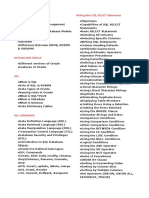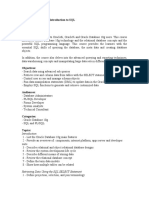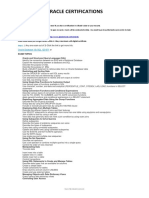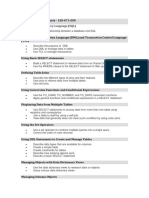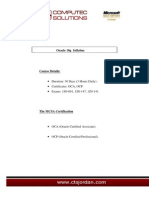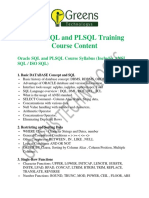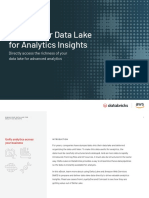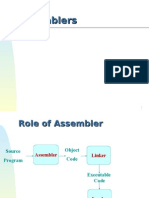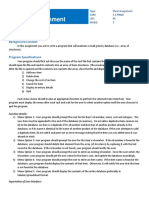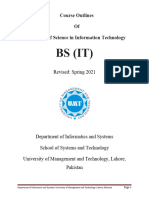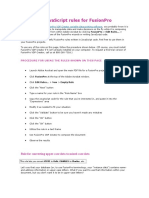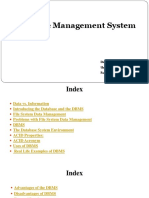0% found this document useful (0 votes)
50 views14 pagesORACLE COURSE SYLLABUS SQL, PLSQL - Qtree Technologies
The document outlines a comprehensive syllabus for an Oracle SQL and PL/SQL course, detailing various sessions that cover database concepts, SQL commands, data manipulation, and PL/SQL programming. Each session includes specific topics such as creating and managing tables, constraints, data manipulation, and advanced SQL functions. The syllabus is structured to guide learners from basic to advanced database management and programming skills.
Uploaded by
blankslatechronicles5Copyright
© © All Rights Reserved
We take content rights seriously. If you suspect this is your content, claim it here.
Available Formats
Download as PDF, TXT or read online on Scribd
0% found this document useful (0 votes)
50 views14 pagesORACLE COURSE SYLLABUS SQL, PLSQL - Qtree Technologies
The document outlines a comprehensive syllabus for an Oracle SQL and PL/SQL course, detailing various sessions that cover database concepts, SQL commands, data manipulation, and PL/SQL programming. Each session includes specific topics such as creating and managing tables, constraints, data manipulation, and advanced SQL functions. The syllabus is structured to guide learners from basic to advanced database management and programming skills.
Uploaded by
blankslatechronicles5Copyright
© © All Rights Reserved
We take content rights seriously. If you suspect this is your content, claim it here.
Available Formats
Download as PDF, TXT or read online on Scribd
/ 14


